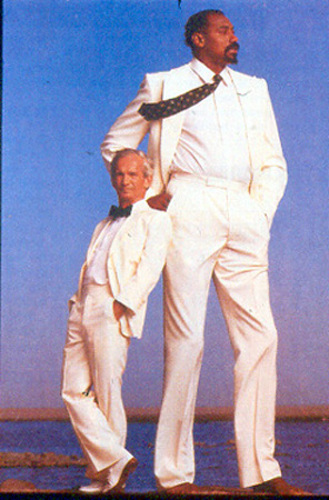
Does ethnicity or race influence height?
August 27, 2014

- Related Topics:
- Ancestry,
- Height,
- Complex traits,
- Population genetics,
- Environmental influence
A curious adult from Washington asks:
"I understand that both environmental and genetic factors affect a person’s height. There is a belief among most people I’ve talked with that given that groups of ethnic peoples eat the same diet, that the different ethnic groups will have varying and predictable heights, based on their race.
For example, my friends believe people of African descent will be tall as will Scandinavian descendants. However, they believe people of Asian descent will be shorter. I wonder if there is a section of DNA discovered that determines a person’s height and if indeed a person’s race is a good indicator of their height?"
Frankly, the things that determine height are pretty complicated. First off, over 200 different regions of DNA are thought to work together to influence your height!
So there isn’t a single section of DNA that contributes to height.* There are lots of DNA regions that all work together to give someone a sort of maximum possible height.
(* At least not for most people. Genetic conditions such as dwarfism or Marfan syndrome are exceptions to this rule.)
The reason I say “maximum possible height” is because our genes tell us how tall we could possibly grow. Our environment determines whether we will reach that height or not. Diet, disease and even socioeconomic status are thought to influence how tall you grow.
So your DNA sets your maximal possible height, and environmental factors determine how close you get to that maximal height. If your DNA says you could be six feet tall, but you don’t get enough to eat while growing up, you won’t make it to six feet.

So what about height and ethnicity?
Well, it’s important to remember that ethnicity is different from “race”. Ethnicity is mostly about culture. Race tries to categorize people based on physical traits. And neither one of these actually has much to do with genetics.
Geneticists look at “genetic populations”. A genetic population is made up of people who share the same ancestry, often from a small geographic area. And these genetic populations don’t fit neatly into what’s typically considered a “race”.
When you combine all of this together, it means that predicting height based on ethnicity or race won’t necessarily be reliable. Two people who identify as “Asian” could have very different ethnicities and geographic ancestries.
Not only that, having the same geographic ancestry doesn’t mean you’re that genetically similar! Two people with the same geographic ancestry still have many differences in their DNA.
Which gets us back to the second part of your question. A group of people with the same ethnicity may have more DNA in common than a random group of people. So it’s possible that some of the DNA that they have in common might affect their maximum possible height as a group.
But this is just the average maximum possible height. It is not the height of each individual in the group.
And when you consider bigger groups instead of specific small populations, this breaks down even faster. There can be so many differences that a tall European could have more DNA in common with a tall Asian than a short European! (Read more here.)
Genes Come in Different Versions
Your DNA is made up of a bunch of smaller sections known as genes. Each gene has the instructions to make one small piece of you.
All humans have the same set of genes to make them human. But the genes come in different versions.
For example, everyone has genes to make eyeballs. But some people have the versions that make blue eyes and others have versions to make brown eyes.
Scientists think that over 200 genes (so far) work together to set your maximum possible height. Each comes in different versions.1

Some of these versions give you a bigger maximum possible height, and other versions give you a smaller maximum possible height. Your final possible height is sort of a summation of all of these different versions.
Think about all the ways that people with similar ancestry may share similar traits, like hair color. This is because they share the same version of certain genes.
It is possible that people with the same ancestry also share the same version of the height genes. This would mean that people with the same ancestry have similar maximum possible heights.
But frankly, we can’t be sure because we don’t know all the genes that influence height. And besides, there are so many genes involved that it is unlikely that any two individuals with the same ancestry have the same versions of even a small proportion of the height genes.
It’s Not Just Genes!
However, it is important to remember that your genes only set your maximum possible height. Your actual height is determined by the environment.
A good example of this comes from Guatemalan Mayans. After the Guatemalan civil war, many Mayans migrated to the United States and had children in their new environment. Thirty years later, Mayan children born in the U.S. were an average of 4.5 inches taller than Mayan children (of the same age) born in Guatemala!2
It is highly unlikely that this increase in average height was due to a change in genes. The Mayans born in the U.S. were likely eating more nutritious food, drinking more milk and seeing doctors more regularly than Mayans born in Guatemala. These changes allowed them to get closer to their maximum possible height.

However, the Mayan children born in the U.S. were still shorter than the average American child of the same age. This might make you think that Mayans have genes that make them shorter. But we can’t draw that conclusion.
The children of Mayan refugees are most likely raised in a very different environment than the average American. So the environment may still be keeping U.S. born Mayans from reaching their maximum possible height.
So it’s true that, broadly speaking, people from the same ethnic groups probably have similar maximum possible heights. But keep in mind that this is all averages—there are plenty of Guatemalan Mayans who are taller than lots of Europeans!
Also remember that the environment plays a big role in determining their actual height. Perhaps as better nutrition and medical care spread across the globe, height differences will become smaller and smaller. Like what has happened in Japan between the end of World War II and today.
Read More:
- NYTimes: Average height in Japan has been increasing since WWII
- Scientific American: Genetics of height
- National Geographic: Batwa Pygmies are an exception to the rule

Author: Catherine Hartzell
When this answer was published in 2014, Catherine was a Ph.D. candidate in the Department of Immunology, studying calcium signaling and T-cell activation in Richard Lewis’s laboratory. Catherine wrote this answer while participating in the Stanford at The Tech program.
 Skip Navigation
Skip Navigation
